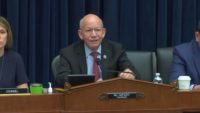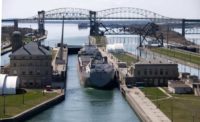Water Infrastructure
House Passes New Water Resources Development Bill
Legislation authorizes about $9B for 38 Corps projects
An important federal infrastructure measure has moved another step forward, with the House’s approval of a bill authorizing at least $8.6 billion in federal funds for 38 new Army Corps of Engineers construction projects, including flood and storm protection, river and port navigation and environmental restoration improvements.
ENR estimates the total cost of the projects, including nonfederal shares, is more than $13 billion. All of the federal funds are subject to congressional appropriations, however.
The 2020 Water Resources Development Act, or WRDA, which the House passed on July 29 by voice vote, has strong support from Transportation and Infrastructure Committee leaders and the rank and file from both parties, an unusual break from the fierce partisanship that has taken hold in Congress.
WRDA will now move to the Senate, where a bill that includes Corps project authorizations is one of two water infrastructure measures that the Environment and Public Works Committee cleared unanimously on May 6.
The Senate version would authorize $5.1 billion in federal funds for 26 Corps of Engineers projects. The water measures have yet to come to the Senate floor for a vote.
After the House’s approval of its WRDA, Senate committee Chairman John Barrasso (R-Wyo.) said in a statement, “I look forward to working with the House on legislation we can send to the president’s desk and help the American people.”
In the immediate future, however, WRDA will take a back seat in the Senate to the intense debate over a new coronavirus-related relief bill introduced July 27.
Along with its funding authorizations, the just-passed House WRDA has some important policy changes.
One such change would fulfill what Transportation and Infrastructure Committee Chairman Peter DeFazio (D-Ore.) called his “decades-long mission” to free the surplus in the Harbor Maintenance Trust Fund.
DeFazio has said the provision would allow $10 billion in Harbor Maintenance Taxes to be used for port dredging projects.
Another key change is an increase in the funding share that comes from the Treasury’s general fund for river lock-and-dam projects to 65%, from the current 50%. That shift should provide more trust-fund dollars for such projects.
If a new WRDA becomes law this year it would continue a six-year streak of enacting water resources legislation every other year.






